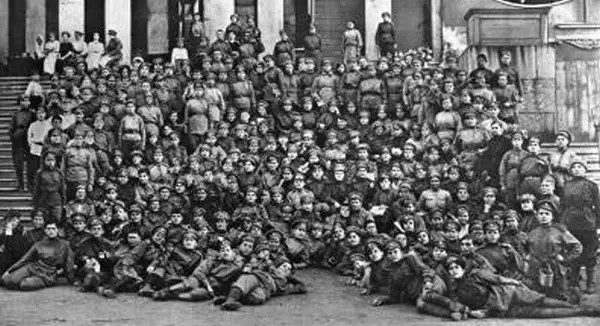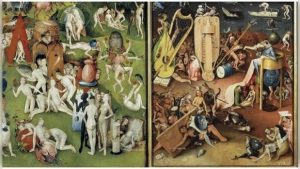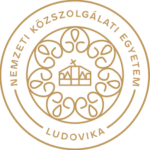The Russian Maria Bochkareva’s battalion of death and other women’s military units
The First World War was also a turning point in that women also went to the front, where they fought with weapons, in greater numbers than ever before. One could say that they became fit for combat from being incapacitated, although in reality, as before, the vast majority of them were “only” assisting in the fighting (for example, by caring for the wounded or in administration). Their role included the leaders of a country often using them to highlight the humane, civilised features of their army.
While civil societies everywhere were involved in supporting the so-called war effort during the First World War, the presence of women in combat was still not evident. As Joanna Bourke points out, “Women who engaged in fighting were required to define themselves in relationship to a combatant masculinity”. (Bourke, 2014, p. 161) Between 1914 and 1918, the idea of arming and integrating women into the army was still far from the minds of most belligerent countries. Only in Great Britain (where, as is well known, conscription did not exist until 1916) were women given training and decorated for their war service. Both the press and politicians acknowledged their “patriotic role”. It was the only place in the First World War where units of nurses were formally established within the army, and where women were also admitted to the army in non-combat duties. There were also some who received armed training, but were not ultimately used in combat.
Although the services of British female soldiers were recognised by the Allied French press, no similar units existed in France, and examples of masculine bravery among women were rarely publicly recognised. German women were not allowed to fight at the front; they were excluded from civilian units, and, unlike their British or French counterparts, they could not even take up work in the war industry. Between 1914 and 1918, in belligerent countries it was more common for a woman to voluntarily join her country’s army.
The First World War was also a milestone for women’s involvement in Russia: for the first time in history, after the February 1917 bourgeois revolution, independent women’s armed forces were temporarily created and deployed in combat. The specific aim of this measure was to shame men who had left the front en masse, and thus to encourage them to return to the battlefield. They believed that female soldiers had significant propaganda value and set an example to demoralised male members of the Russian army. Upon the order of Alexander Kerensky, the head of the provisional government, the Russian Ministry of Defence authorised the creation of sixteen separate all-female military units: four were designated as infantry battalions, eleven as communications units and one as a naval unit. In the autumn of 1917, Bessie Beatty, an American reporter in Russia at the time, estimated the number of women serving in sex-segregated units at 5,000, but only the 1st Russian Women’s Battalion of Death and the 1st Petrograd Battalion were sent to the front. At the same time, there was no consensus among military leaders on the military value of female soldiers, and only half-hearted support for uniformed female units. Many were waiting to see how the women would perform in combat and whether they would have a positive impact on the male soldiers. However, after the 1st Russian Women’s Battalion of Death failed to have the desired effect of revitalising the war-weary soldiers of the Russian army, the military authorities began to question the whole idea of women’s units. The civilian government also found it difficult to justify why they had devoted the necessary resources to such an unreliable enterprise. By August 1917, the military leadership had finally became uncertain with regard to their support, and a month later, faced with the withdrawal of official support, the 2nd Moscow Women’s Battalion of Death was disbanded. Just before the dissolution, however, some five hundred volunteers were sent to the front at their own request, without the knowledge or permission of the military authorities. On 30 November 1917, however, the new Bolshevik government ordered the official disbandment of the remaining women’s military units. Regardless of this, members of the 1st Petrograd and 3rd Kuban Women’s Battalions remained at the front until early 1918.

Source: discover.hubpages.com
Among the Russian women who fought at the front between 1914 and 1918, the most famous was Maria Bochkareva. She was the first Russian woman to command a military unit. She was of peasant origin, her father served as a sergeant in the Tsarist army in the Russo-Turkish War. She married twice, then divorced due to abuse. At the outbreak of the First World War in 1914, Bochkareva volunteered for the 25th Tomsk Reserve Battalion of the Russian Army, from where she was posted to the Red Cross. However, when she still insisted on fighting alongside the men, she sent a telegram to Tsar Nicholas II for personal approval. After being given the green light, she was sent to the front after three months of training. She was first decorated for rescuing wounded soldiers from the field, and after being wounded and working as a nurse, she was allowed to return to the front as a corporal. After another injury, she continued to fight as a senior non-commissioned officer. In the spring of 1917, when the Russian army started to disintegrate, she was asked by the military leadership to create an all-women combat unit to stop the army’s moral disorientation. Although the recruitment of women was against army regulations, the all-women battalion, the first of its kind in history, won the approval of both Brusilov and Kerensky. Bochkareva’s Battalion of Death initially had around two thousand female volunteers, but strict disciplinary measures meant that all but three hundred left the unit. After a month’s training and the usual consecration, Bochkareva and her unit were annexed to the 1st Siberian Army Corps and sent to the Russian Western Front to take part in the so-called Kerensky Offensive. The unit took 200 prisoners in the battles. Bochkareva was then promoted to the rank of lieutenant. Her unit fought in a major battle near the town of Smarhon, now in Belarus, and remained at the front during the October Revolution, but did not take part in the defence of the Winter Palace, unlike another women’s unit, the 1st Petrograd Women’s Battalion. It was subsequently disbanded after encountering increasing hostility from the male troops remaining at the front. The Bolsheviks detained her twice, but she was eventually granted a foreign passport and allowed to leave the country. In April 1918, she travelled to the United States on the steamship called Sheridan. During her tour of the West, she received the respect due to heroes, something she did not get at home: Woodrow Wilson greeted her as the first female lieutenant in history, while the King of Britain referred to her as the “second Joan of Arc”. She wrote her memoirs, which were published in English under the title Yashka: My Life As Peasant, Exile, and Soldier (Constable and Company Limited, 1919). But Bochkareva’s later fate was tragic. After returning to Russia and joining the civil war on the side of the Whites, she was captured and executed by the Bolsheviks after four months of interrogation. Both the latter and the Whites used her figure for conflicting propaganda purposes.
While the figure of Bochkareva is well known, the memory of the women who went to the front as eager patriots, individually and illegally, to fight alongside their male comrades in uniform, is less well remembered. Traditionally, this has always been the way (in Russia and elsewhere) for women to take part in armed combat, albeit in small numbers. Between 1914 and 1918, they emerged mainly on the Eastern Front, where frequent and rapid redeployment of troops created unstable military and social situations that had a destabilising effect on traditional gender roles. At the same time, the representation of women like this, who took up arms on their own initiative, has hardly changed compared to earlier eras: they were portrayed as “masculinised virgin warriors” who, thanks to their uniforms, transform their bodies into heroic “male bodies” and take pride in their purity (virginity). The role models for Russian women volunteers were Joan of Arc and Nadezhda Durova, who was a volunteer officer in the Russian army during the Napoleonic Wars. They both appear in Russian children’s books of the 19th century as heroines who inspired Russian society.
In addition to Bochkareva, we should also mention another female hero of the First World War: Ecaterina Teodoroiu, a peasant who matriculated in Bucharest and, after working as a nurse, volunteered to join the Romanian army reserves when, in August 1916, Romania entered the First World War on the Alliance side. Similarly to Bochkareva, she was allowed to go to the front with the Tsar’s permission, but also with the special permission of the Romanian royal family; in fact, Queen Marie herself was often seen among the soldiers, near the front line. During the fighting, Teodoriu was known as the “Heroine of the River Jiu” and was officially awarded the Medal of Military Virtue (Medalia “Virtutea Militară”). She returned to the front even after she had been wounded, when King Ferdinand appointed her an honorary sub-lieutenant (sublocotenent). The monarch also put her in command of a platoon of twenty-five men, making her the first female Romanian military officer. When she was killed in action in September 1917, her tombstone was inscribed with the words “Virgin Heroine” (fecioara Eroină), in the manner of Joan of Arc. Teodoriu became the first female personality (not an allegorical female figure) to appear on a Romanian banknote (in 2018, she was only preceded by Queen Marie on a centenary hundred lei note).
Opening image: Ecaterina Teodoroiu on the 20 lei note issued in 2021. Source: BNR.ro
The blog is based on the following papers
Eszter Balázs – Anita M. Madarász – Balázs Sipos: Gendered War Heroism and Heroisation During the 20th Century, ME-DOK, 2018, n° 3. 27-50.






